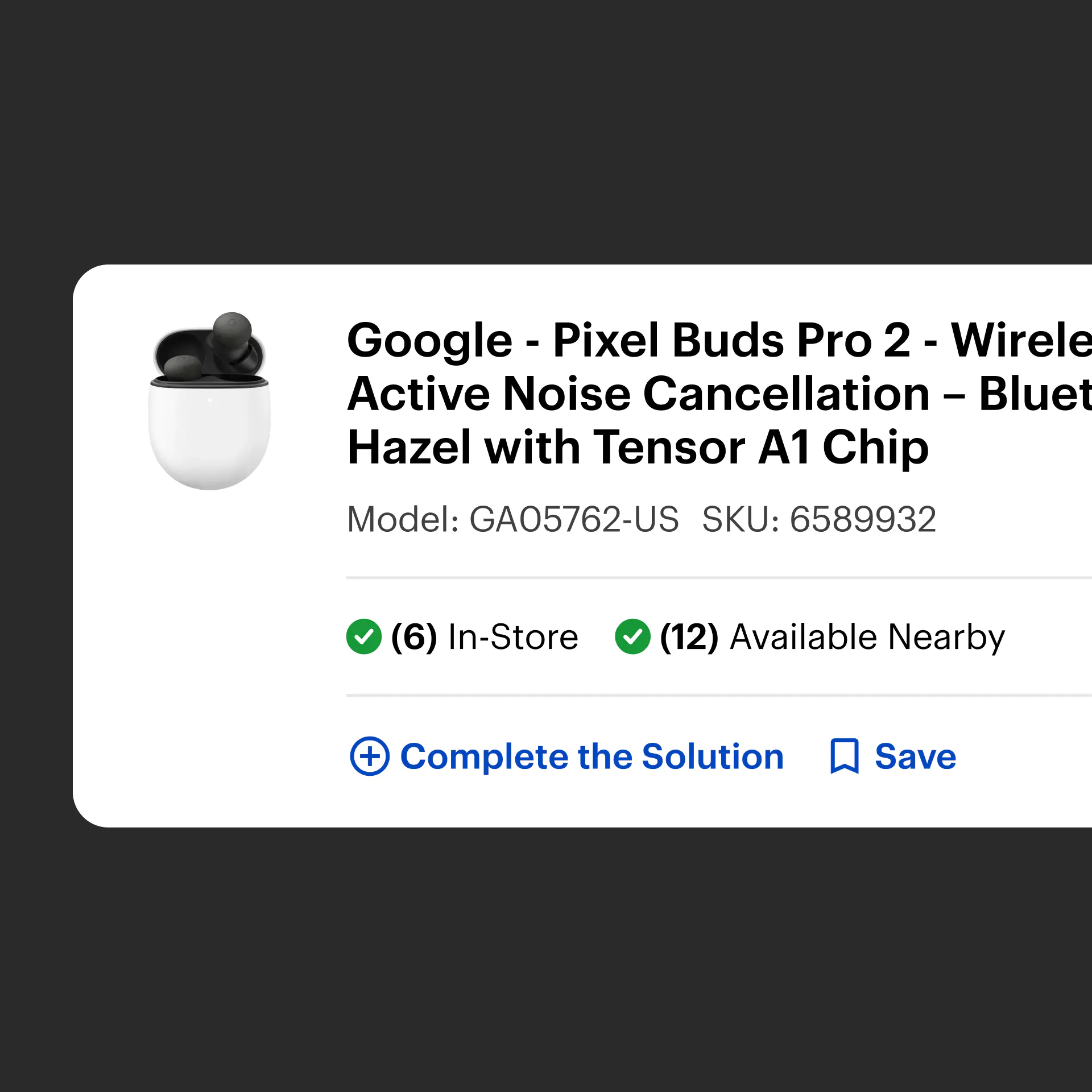The CoreBlue in-store cart tool had grown chaotic over years of quick fixes. Information was scattered, totals didn’t match, and basic actions like editing items required multiple clicks. Employees wasted valuable time hunting for details while customers waited. This hurt both confidence and sales velocity.
Rethinking the cart experience

Image caption will go here
Summary
- Cluttered cart slowed in-store sales
- Key info buried across multiple screens
- Low employee trust led to missed conversions
- Rebuilt layout for clarity and speed
- Grouped pricing and totals into one view
- Built a strong foundation to scale over time
Collaborators
My Role

UX Designer II (Design Lead)
Employee Selling Tools Team
Design



Product


Engineering


Research

Results
Employee Onboarding Speed
+45%
New employee time-to-productivity decreased from days to hours after using the new cart
Cart Completion Speed
+19%
Results from first 4 weeks post-launch (vs. previous cart as baseline)
Responsibilities
Design Responsibilities
• User Experience Design
• User Interface Design
• Information Architecture
• Interaction Design
• Design System Integration
• Rapid Prototyping
Cross-Functional Collaboration
• Product Strategy Alignment with PM + Ops
• Employee Feedback + Research with UXR
• Engineering Partnership for Build Reviews + QA
• Design–Dev Handoff + Pilot Support
Timeline & Status
Timeline
Q2 – Q4 2021 (9 Months)
Status
Team
Design
Product
Engineering
Research
Tools
Design


Collaboration



Engineering


Research


Includes responsibilities, timeline, status, team details and tools
Problem
A clunky, disorganized cart caused employee frustration and inefficient customer conversations.

Legacy CoreBlue cart before redesign

Internal Best Buy employee survey data (2020)
Solution
I led the team in rebuilding the cart to reduce friction and boost in-store conversions.
Rebuilt CoreBlue cart with modern architecture
The new cart introduces a simplified hierarchy, clear task zones, and faster load times. Every interaction, from scanning items to applying discounts, was re-evaluated to support real-world retail speed.
Micro-interactions designed to build user confidence

Financial details grouped for faster comprehension
Subtle micro-interactions confirm each action, while pricing, taxes, and promotions are visually grouped into a single, easy-to-scan summary. The new structure reduces hesitation and helps employees move through transactions with certainty.
Flexible product tile system for various use cases
Each product tile dynamically adapts to the item type: whether it’s a single SKU, bundle, or protection plan. This modular approach keeps layouts consistent while supporting thousands of product variations without manual overrides.
Process
We spoke with employees, mapped out their pain points, rethought the cart's layout and piloted the redesign.

Employee workshops on the current cart experience
New responsive grid structure for improved layout clarity
We had working sessions with employees and and mapped out common pain points. Patterns quickly emerged around cluttered hierarchy and inconsistent feedback. After rapid prototyping and validation with employees, we launched a controlled pilot in select stores.
“The cart doesn’t really make sense. Just put stuff in a logical place so we can use it to close sales as fast as possible."

This direct feedback became our north star. We stripped the interface down to what mattered most: speed, clarity, and trust. Every layout decision, color change, and animation was measured against one question: Does this help employees close the sale faster?





By keeping all teams in the loop, decisions stayed grounded in real store behavior, not assumptions. The result was a cart redesign that felt faster, simpler, and built for the way employees actually work, not how we thought they should.

Evolving the legacy cart through XFN feedback
The final cart has been completely rebuilt from scratch. Every single component has been cleaned up, standardized and is now a strong foundation for future improvements.
Results
Employees were able to move faster and more confidently when using the new cart.

Employee onboarding time reduced from days to hours

Results from first four weeks post-launch (vs. previous cart)
“The updated cart is actually easier to use! It’s not perfect, but I feel more confident using it now.”

Employees moved through sales faster and felt more confident using the cart. New hires who once took several days to learn the system were completing transactions within hours.
Roadmap
Next, we're expanding the cart with advanced features to unlock even greater employee efficiency.

“Customers also bought” section to increase cart size

Real-time store inventory for faster ordering
Moving forward, we’re adding features to help employees sell smarter: contextual “Customers also bought” suggestions to raise cart size, and live store inventory to help associates confirm availability in real time. Together, these will push the tool from functional to proactive and empowers employees close more sales with less effort.





